Przewodnik na temat rootowania urządzenia Google Pixel
Autorstwa Adela D. Louie, Ostatnia aktualizacja: 27 sierpnia 2019 r
Many Android users were talking about getting more freedom for them to be able to gain access to the services that are restricted to Android devices. However, there is actually a way for you to do this. And this by rooting your Android device.
Same applies to those people who use Google Pixel. They would want to have more apps that were commonly restricted for their device. That is why we are going to show you what you need to do to make your Google Pixel root.
WSKAZÓWKA:
- Przewodnik Google: jak odzyskać usunięte zdjęcia z Google Pixel
- Najlepsze oprogramowanie do tworzenia kopii zapasowych Androida na PC [Recenzje 2019]
Part 1: What Is Rooting?Part 2: Risks of Rooting Your Android DevicePart 3: Backup Your Google Pixel Before RootingPart 4: How to Root Google Pixel The Easiest WayCzęść 5: Wniosek
Part 1: What Is Rooting?
Rooting is known to be a process that will be able to let you get any root access to your Android device’s operating system. Rooting your Android device will give you the privilege for you to have your Android device’s software modified and you can also install another software which you cannot do if your device is not rooted. Aside from this, you will be able to get more perks when you try to let your Android device rooted as the following:
- Full customization for any themes or graphics.
- You can download any application without having to worry about where it was posted.
- You will be able to extend the life of your battery and you will be able to add on to the performance of your device.
- You will be able to update your Android device to the latest software if your device is outdated and that you can longer update it with the manufacturer of your Android device.
Part 2: Risks of Rooting Your Android Device
As obvious as it sounds, if there are some advantages that you can get one that you have rooted your Android device, there are also some risks that you have to make at your own expense. Here are some of the things that you may consider to be a disadvantage on rooting your Android device.
1. Your Android Device Might Get Bricked
Once that you have messed up the rooting process on your Android device, then that means that your mode modifications and also your Android device’s software might get damaged and you will not be able to use your Android device anymore.
2. Your Phone Warranty Will Be Voided
Rooting your Android device is legal. However, once you root your Android device, it will automatically be out of warranty.
3. Malware Can Easily Invade Your Android Device
Once that you root your Android device, then that means that you are also quite letting any security restrictions take place. This means that viruses, worms, spyware, and Trojan can easily get into your Android device’s software. This will happen once that your device is not protected by any antivirus for Android devices.
These are some of the things that you should be considering before you root your Android device. Now if you are still decided to do root your Google Pixel device, then go ahead and keep reading this article.
Part 3: Backup Your Google Pixel Before Rooting
Rooting your Google Pixel device will not actually delete the data that you have. However, as what we have mentioned earlier, if you are not successful in rooting it, then your Google Pixel device can be bricked and that you will not be able to use it anymore as it will become as useless as a brick.
Backing up your data from your Google Pixel device is making sure that you will not lose any of your data if something happens to your Google Pixel device. And for you to do so, we highly recommend you to use a certain tool that is a safe and very effective tool that you can use. This is the FoneDog Toolkit - Kopia zapasowa i przywracanie danych Androida.
The FoneDog Toolkit – Android Data Backup and Restore have the ability to back up any of your data from your Android device to your PC with One Click. You can also backup all of your Apps and as well as your Apps data. You will also be able to view and restore any backup file that you have to any other Android device that you have as the FoneDog Toolkit – Android Data Backup and Restore can support more than 8,000 Android devices. Here is how to use the FoneDog Toolkit – Android Data Backup and Restore.
Darmowe pobieranieDarmowe pobieranie
*Backup Google Pixel
Krok 1: Pobierz i zainstaluj
Go ahead and download the FoneDog Toolkit from our official website and then install it on your PC. You will be able to choose to get the free trial version and use it for 30-days for you to see how amazing this tool is.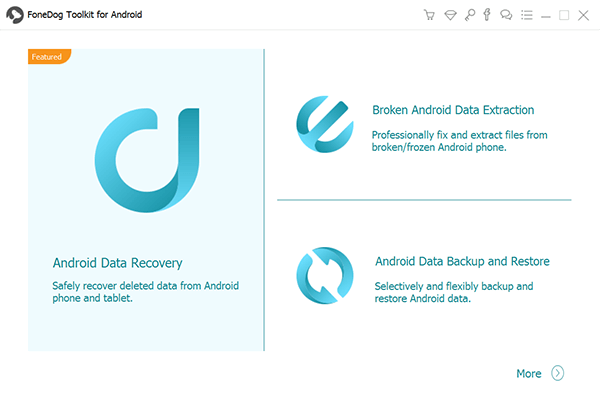
Krok 2: Uruchom FoneDog Toolkit
Once that you have successfully installed the FoneDog Toolkit on your PC, go ahead and run the program. See to it that there is no other backup program running in the background aside from the FoneDog Toolkit.
Step 3: Have Your Google Pixel Connected to PC
Once that the FoneDog Toolkit is up and running, go ahead and connect your Google Pixel device to your PC using your USB cable. Make sure that you have enabled USB debugging on your device. If your device is running in a 4.0 operating system then you will be able to see a pop-up window on your device’s screen asking for your authorization to turn on USB debugging. All you have to do is to click on the “OK” button.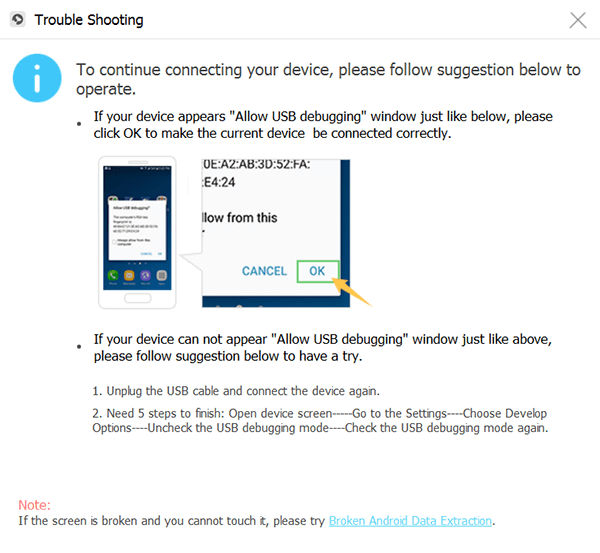
Then on the main interface of the program, go ahead and click on the “Android Data Backup and Restore” option.
Krok 4: Wybierz opcję kopii zapasowej
Once that the FoneDog Toolkit – Android Data Backup and Restore was able to detect your Android device, go ahead and choose the “Device Data Backup”. Then the program will show you all the file types that it supports to backup to your PC.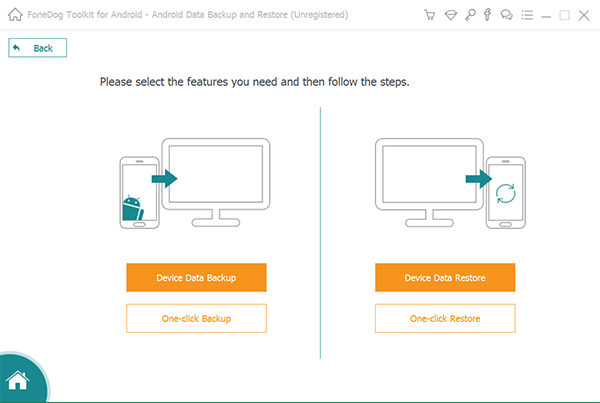
Step 5: Choose All The Data You Want to Backup
From the list of file types shown on your screen, all you have to do is to choose which data you want to back up from your Android device. You can choose from Contacts, Messages, Call Logs, Photos, Videos, and more.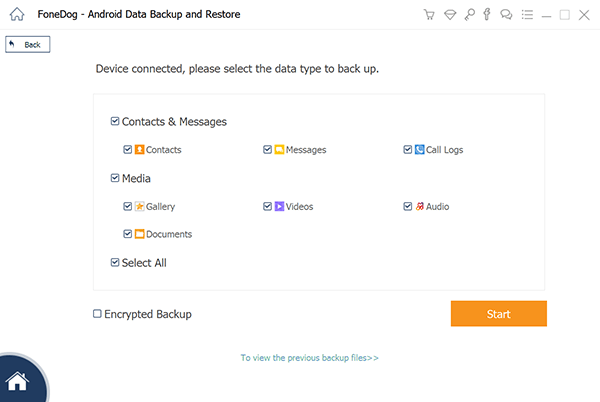
Step 6: Finish Up The Backup Process
Once that you have chosen all the data that you want to back up from your Google Pixel device, go ahead and click on the “Start” button. This will then start the backup process. It may also take some time depending on the size of the files that you are backing up.
Also, you have to make sure that you do not disconnect your Google Pixel device to your PC. Do not use the device while the process is still on.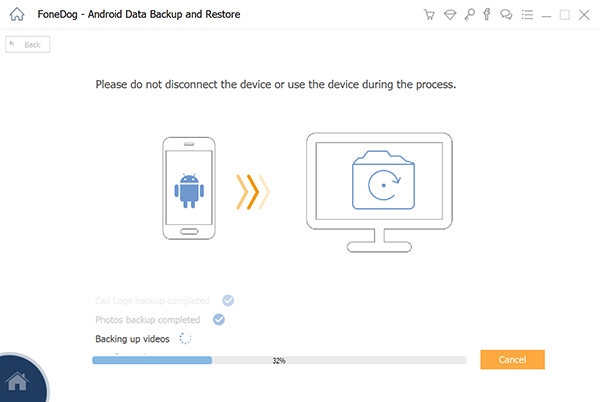
Krok 7: Zakończono tworzenie kopii zapasowej
Once that the backup process is done, go ahead and click on the “OK” button on your screen. From there, you will be able to view all the data that you have backed up from your Google Pixel device to your PC.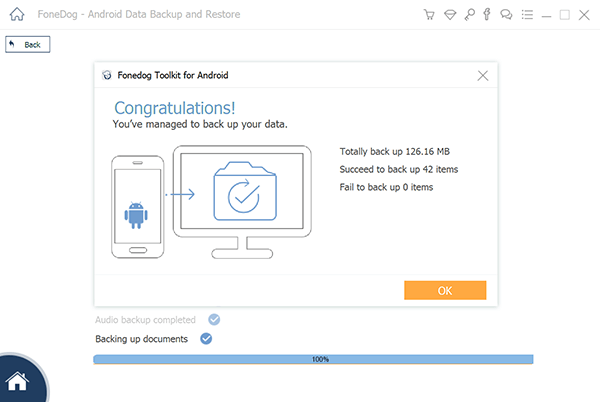
*Restoring Data From PC to Google Pixel
And in the latter part, if you would wish to get back the backup that you made, you can still do using the FoneDog Toolkit – Android Data Backup and Restore. Here is how to do it.
Krok 1: Uruchom program
Go ahead and launch the FoneDog Toolkit – Android Data Backup and Restore on your PC. Again, you have to make sure that there are no other applications aside from the FoneDog Toolkit – Android Data Backup and Restore.
Step 2: Connect Your Google Pixel Device
After that, go ahead and connect your Google Pixel device to your PC using your USB cable. Make sure that you have enabled USB debugging on your Android device.
And then, once that the FoneDog Toolkit had detected your Android device, go ahead and click on the “Device Data Restore” option.
Krok 3: Wybierz plik kopii zapasowej i skanuj
After that, the program will then show you a list of backup file that you have. From there, go ahead and choose a backup file according to the time and the date that it was made.
Once that you have chosen a backup file that you want, go ahead and click on the “Start” button. This will then let the FoneDog Toolkit – Android Data Backup and Restore to scan all the items that your backup file contains.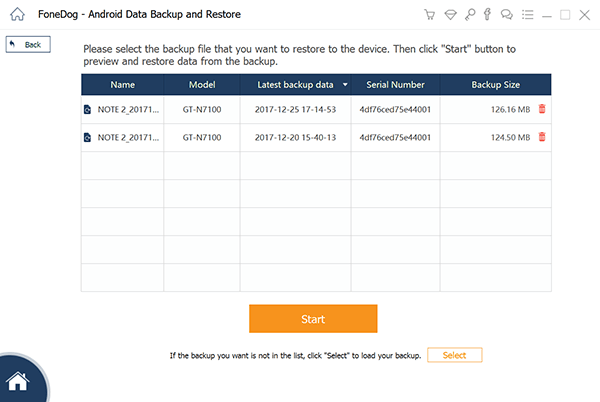
Krok 4: Wybierz dane do przywrócenia
Then, once that the scanning process is complete, go ahead and choose all the data that you want to restore. You can do this by choosing from the file types located on the left side of your screen. Then, go ahead and click on the “Restore” button and confirm the action by clicking on the “OK” button.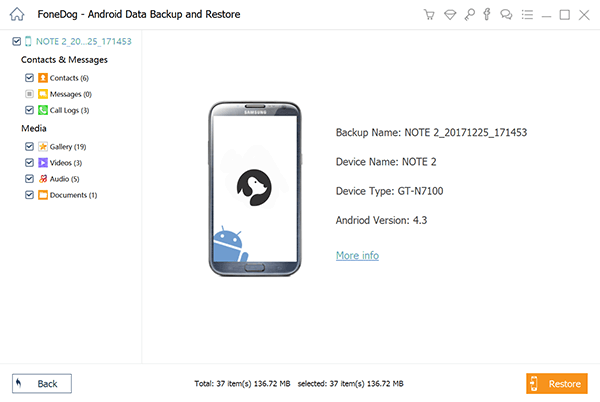
Krok 5: Przywróć ukończone
Once that the scanning process is done, then you will be able to view all the items that you have restored. And you’re done.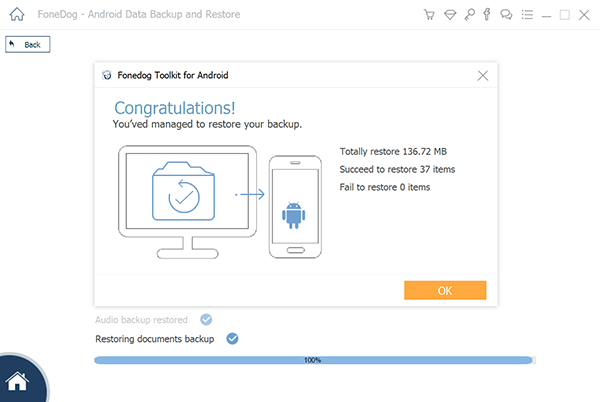
Part 4: How to Root Google Pixel The Easiest Way
Here, you must first need to unlock the bootloader. And for you to be able to do so, follow the guide below.
- Go ahead and run the Adb-setup.exe file on your PC. (If you do not have this, go ahead and download it.
- Then you will be able to see a command on your screen asking if you would want to install ADB and Fastboot. All you have to do is to press the Y button.
- Then the ADB and Fastboot will then be installed. After that, you will be able to see another command asking if you would want to install the device driver. Go ahead and press on the Y key.
- Then a new window will appear on your screen so just go ahead and click on the Next button to install the drivers nex
- After that, go ahead and click on the Finish button.
- Then you will be able to see the ADB folder on your Windows drive.
- For you to check if the ADB fastboot and the drivers are running, go ahead and launch the ADB folder, then press and hold the Shift Key and then right-click anywhere in your screen. And then choose “open command window here” from the menu on your screen.
- Then once that the command window is up, go ahead and connect your Google Pixel device and then key in Adb devices. Doing this will bring out all the devices that are connected to your PC. And then go to the next step.
The Hard Part is Over
- Here, go ahead and unplug your Google Pixel device from your PC.
- Then go to where you have saved the Modded TWRP file that you have download on your PC. And then move the file to the ADB folder.
- Then go to your ADB Folder and then press and hold the Shift Key and then right click anywhere in your folder. And then choose “Open Command Window Here”.
- Then go ahead and boot your Google Pixel in Fastboot. Do this by doing a press and hold the power button and the volume down key while your device is off.
- Once the Google Pixel is back on, go ahead and plug it to your PC.
- Then type the following command: fastboot boot TWRP.img.
- Then this will boot your Google Pixel to TWRP mode.
- Then tap on Install and then choose the SuperSu Config Zip File that you downloaded.
- Then, tap on Swipe to Flash.
- After the flashing process, the SystemSu Config will launch. From there, select the Systemless SBIN from the options on your screen and allow SuperSU to choose on the succeeding options.
- Once that the files are done with the flashing process, go ahead and go back and choose Su Hide zip file and then flash it.
- Reboot your Google Pixel device
After doing all these steps, your Google Pixel will then be rooted.
Darmowe pobieranieDarmowe pobieranie
Część 5: Wniosek
Rooting your Google Pixel may take some time especially if you are not that techy enough to do this step. It is best that you let someone familiar with rooting phones does the whole process. This way, you will not be able to damage your Google Pixel device.
And, of course, before doing anything else on your Google Pixel device, always make sure that you have backed up your data using the FoneDog Toolkit - Kopia zapasowa i przywracanie danych Androida.
Zostaw komentarz
Komentarz
Zestaw narzędzi Android
Odzyskaj usunięte pliki z telefonu i tabletu z Androidem.
Darmowe pobieranie Darmowe pobieranieGorące artykuły
- Jak naprawić problem z analizowaniem pakietu
- Jak odzyskać wiadomości WhatsApp po odinstalowaniu?
- Jak odzyskać usunięte zdjęcia ze Zdjęć Google?
- Dowiedz się, jak odzyskać historię usuniętych połączeń z Xiaomi
- Jak odzyskać usunięte kontakty z Gmaila
- Trzy proste sposoby tworzenia kopii zapasowych Samsung Galaxy S9 / S9 +
- Jak odzyskać usunięte wiadomości WhatsApp od Huawei
- Jak odzyskać usunięte wiadomości tekstowe na Androida bez rootowania
/
CIEKAWYDULL
/
PROSTYTRUDNY
Dziękuję Ci! Oto twoje wybory:
Doskonały
Ocena: 4.5 / 5 (na podstawie 108 oceny)
